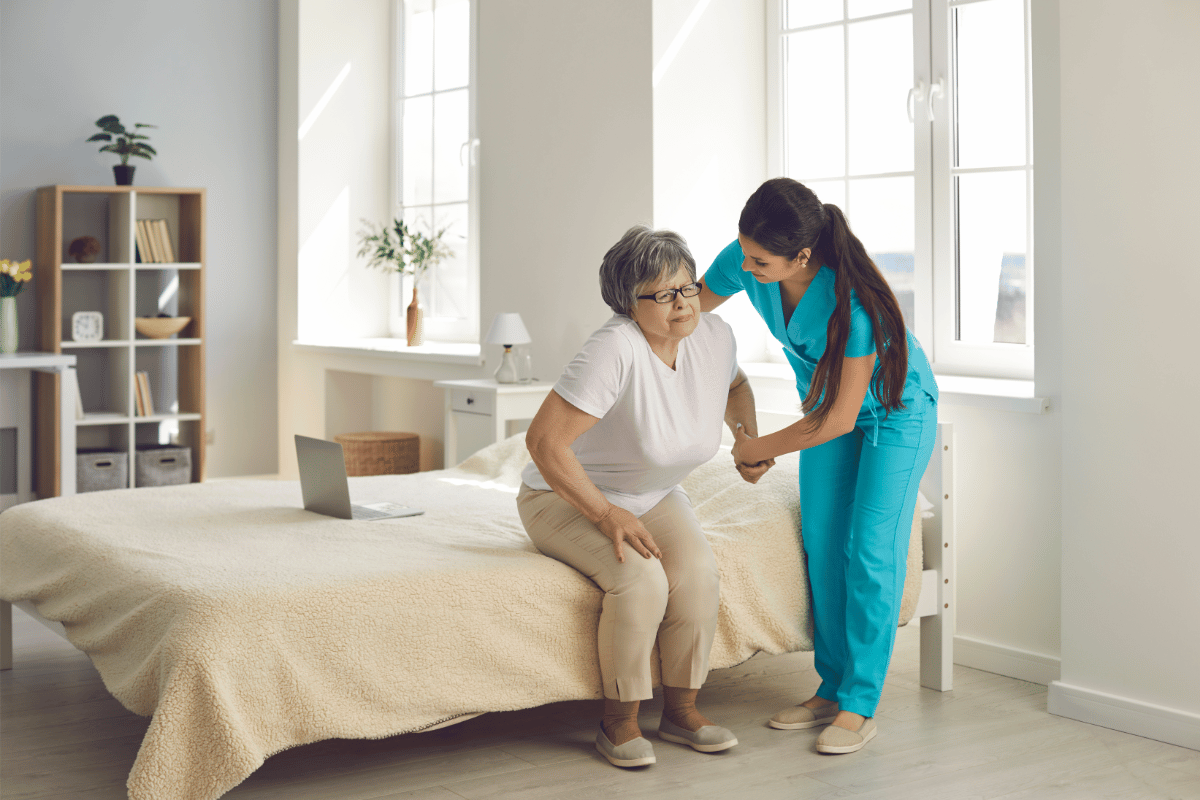Free HHA Course
Introduction
A Home Health Aide (HHA) is a critical role in the healthcare industry, providing personalized care for individuals who need assistance with daily living activities in their homes. As the aging population continues to grow and the demand for home-based care increases, HHAs have become essential in helping elderly and disabled individuals maintain their independence and quality of life.
This handbook serves as a comprehensive guide for anyone looking to complete a Home Health Aide course and become certified in this rewarding field. The handbook covers everything from an overview of the profession, essential skills, the certification process, and career opportunities. It is designed to help prospective HHAs understand the requirements of the role and prepare for a successful career in home healthcare.
Chapter 1: Understanding the Role of a Home Health Aide
What is a Home Health Aide?
A Home Health Aide (HHA) is a trained professional who assists individuals with chronic illnesses, disabilities, or age-related conditions that hinder their ability to perform daily living tasks independently. HHAs help clients with personal hygiene, medication management, light housekeeping, and mobility while providing companionship and emotional support.
Unlike other healthcare professionals who work in clinical settings, HHAs work in a client’s home, providing a more personalized and comfortable care experience. In many cases, HHAs work under the supervision of registered nurses or other healthcare professionals to implement a care plan tailored to the specific needs of the client.
Duties and Responsibilities of an HHA
The responsibilities of a Home Health Aide vary depending on the client’s needs but generally include:
- Assisting with personal hygiene, including bathing, grooming, and dressing
- Helping clients with mobility, such as moving from bed to chair or assisting with walking
- Monitoring vital signs like blood pressure, pulse, and temperature
- Preparing meals and assisting with feeding
- Administering prescribed medications as directed
- Performing light housekeeping duties, including laundry, vacuuming, and tidying up
- Providing emotional support and companionship
- Assisting with exercises and physical therapy routines as prescribed by a healthcare provider
Where HHAs Work
Home Health Aides typically work in the homes of their clients, though they can also be employed in residential care facilities, hospices, assisted living communities, or adult day care centers. The goal of HHAs in most settings is to enable clients to maintain their independence and quality of life while living in the comfort of their homes.
Chapter 2: Skills and Qualities of a Successful Home Health Aide
Essential Personal Skills
Home Health Aides must possess certain personal qualities that make them effective in their roles, including:
- Compassion: The ability to empathize with clients and understand their emotional and physical challenges is vital.
- Patience: Clients may move slowly, require repeated assistance, or display behavioral issues, requiring a calm, patient approach.
- Communication Skills: HHAs must be able to clearly communicate with clients, their families, and other healthcare professionals, as well as understand the needs of their clients, even when clients have difficulty expressing themselves.
- Attention to Detail: Monitoring clients’ health and behavior requires careful attention to ensure any changes or concerns are promptly addressed.
Technical Skills and Knowledge
While personal skills are critical, technical knowledge is also necessary for HHAs to provide effective care. This includes:
- First Aid and CPR: Knowing how to provide basic first aid and perform CPR in emergencies is essential.
- Infection Control: Understanding how to maintain a clean and hygienic environment to prevent the spread of infection.
- Basic Medical Knowledge: Understanding medical terminology and the basics of the human body helps HHAs accurately follow care plans and communicate with healthcare providers.
Emotional and Physical Demands
Home Health Aides often face emotionally challenging situations, such as caring for clients with terminal illnesses or providing end-of-life care. The emotional demands of this work require resilience and the ability to manage stress.
Physically, the job can be demanding as well. HHAs may need to assist clients with lifting or moving, requiring good physical strength and stamina. The ability to stand for long periods and perform repetitive tasks is also necessary.
Chapter 3: Home Health Aide Certification Process
Requirements to Become an HHA
To become a certified Home Health Aide, candidates typically need a high school diploma or equivalent, though some states and employers may have additional requirements. Most importantly, completing a formal training program is essential to certification.
Overview of a Typical HHA Course
An HHA course typically includes:
- Classroom Instruction: This covers theoretical knowledge about healthcare, basic medical concepts, and home care techniques.
- Practical Training: Hands-on experience is provided in clinical settings or simulated home environments where students practice patient care skills.
- Observation Hours: Some states require observation or supervised practice under the guidance of a licensed healthcare professional.
Training programs usually consist of at least 75 hours, with a portion dedicated to hands-on clinical practice.
Certification and Licensing
After completing an HHA course, candidates must pass a competency evaluation, which usually includes both written and practical exams. Each state has its own certification requirements, so it’s essential to check with your state’s regulatory body. After passing the certification exam, individuals can become licensed HHAs, making them eligible for employment.
Chapter 4: Core Subjects Covered in HHA Training
Patient Care Skills
HHAs are trained to assist clients with activities of daily living (ADLs), which include:
- Bathing and grooming
- Dressing and undressing
- Eating and drinking
- Toileting and incontinence care
Learning how to perform these tasks while maintaining the client’s dignity and comfort is a central focus of HHA training.
Safety and Infection Control
Safety is a top priority when caring for clients in their homes. HHAs learn:
- Proper body mechanics to prevent injury when assisting with transfers or lifting
- Infection control techniques, including hand hygiene and sterilization methods
- Fall prevention strategies
Communication and Compassionate Care
Building rapport with clients and their families is essential. HHAs are trained in compassionate communication techniques, including active listening, empathy, and respectful dialogue. They are also taught how to handle difficult conversations, such as discussing declining health or end-of-life issues.
Basic Medical Knowledge
While HHAs do not provide medical care in the same way that nurses do, they need a basic understanding of medical concepts, such as:
- Monitoring vital signs and documenting changes
- Recognizing common medical conditions and symptoms
- Understanding medication administration and potential side effects
Chapter 5: Working with Different Client Populations
Elderly Care
Most HHAs work with elderly clients, many of whom may have chronic conditions such as arthritis, diabetes, or dementia. Understanding the physical and emotional needs of older adults is essential for providing high-quality care.
Working with Clients with Disabilities
HHAs often work with clients who have physical or developmental disabilities. These clients may need assistance with mobility, personal care, and daily living activities. Training includes learning how to support independence while ensuring safety.
Pediatric Care
Though less common, some HHAs work with children who have special healthcare needs. This may involve caring for children with physical disabilities, chronic illnesses, or developmental delays. Pediatric care requires knowledge of child development and how to adapt care for younger clients.
Chapter 6: Legal and Ethical Responsibilities of an HHA
Understanding Patient Rights
HHAs must respect the rights of their clients, which include:
- The right to privacy and confidentiality
- The right to be treated with dignity and respect
- The right to make decisions about their care
Confidentiality and HIPAA Compliance
Protecting client privacy is crucial, and HHAs must follow the guidelines set forth by the Health Insurance Portability and Accountability Act (HIPAA). This includes keeping personal health information confidential and ensuring it is only shared with authorized individuals.
Handling Abuse and Neglect
HHAs must be vigilant about recognizing signs of abuse or neglect, whether physical, emotional, or financial. If they suspect abuse, they are required by law to report it to the appropriate authorities.
Chapter 7: Career Opportunities and Advancement for HHAs
Types of Employers
HHAs can find employment in various settings, including:
- Home healthcare agencies
- Hospices
- Assisted living facilities
- Private households
- Long-term care facilities
Salary Expectations
The salary for Home Health Aides varies depending on location, employer, and experience. According to the Bureau of Labor Statistics, the median annual wage for HHAs in 2020 was approximately $27,080.
Advancement Opportunities
While the position of an HHA is often entry-level, there are opportunities for advancement. With additional training and certification, HHAs can pursue roles such as Certified Nursing Assistants (CNA), Licensed Practical Nurses (LPN), or even Registered Nurses (RN).
Chapter 8: Tips for Success in a Home Health Aide Career
Managing Workload and Avoiding Burnout
Caring for multiple clients, often in emotionally challenging situations, can lead to burnout. To prevent this:
- Set clear boundaries between work and personal time
- Take breaks when needed to avoid fatigue
- Practice stress management techniques, such as meditation or exercise
Continuing Education
Continuing education is vital for keeping up with the latest healthcare practices and maintaining certification. Many states require HHAs to complete a certain number of continuing education hours each year.
Building Relationships with Clients and Families
Establishing trust and strong communication with clients and their families is key to long-term success as an HHA. Treating clients with respect, compassion, and patience will lead to more rewarding relationships and better care outcomes.
Conclusion
Becoming a Home Health Aide is a fulfilling career path for individuals who are passionate about providing care and improving the lives of others. With the right training, certification, and dedication, HHAs can make a significant impact in the lives of their clients. This handbook provides a solid foundation for anyone looking to start their journey in home health care, offering essential knowledge and practical advice to succeed in this vital role.




